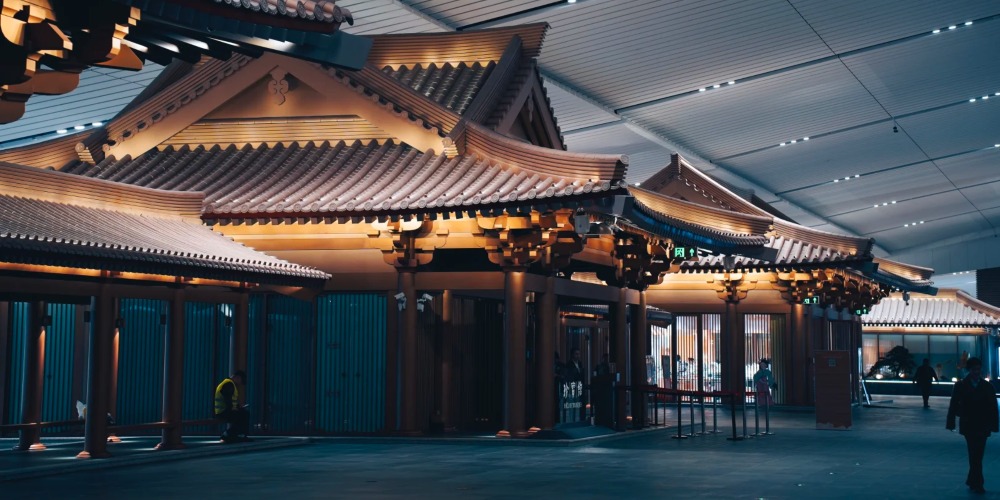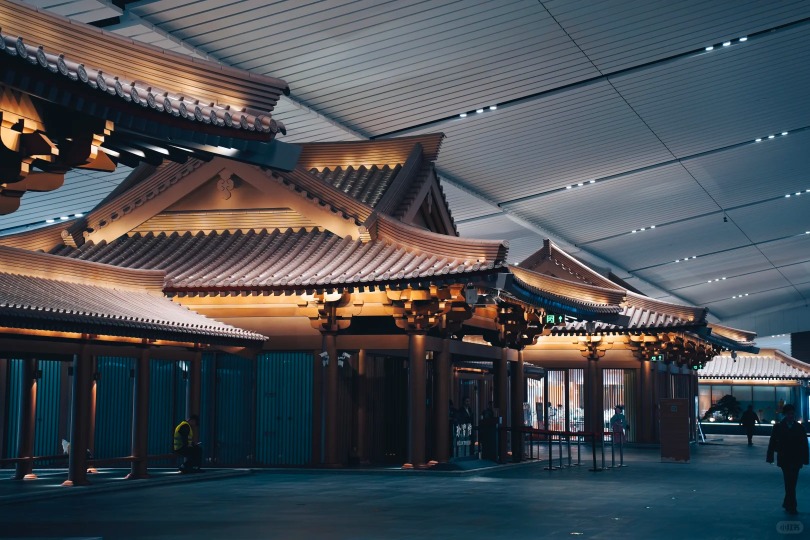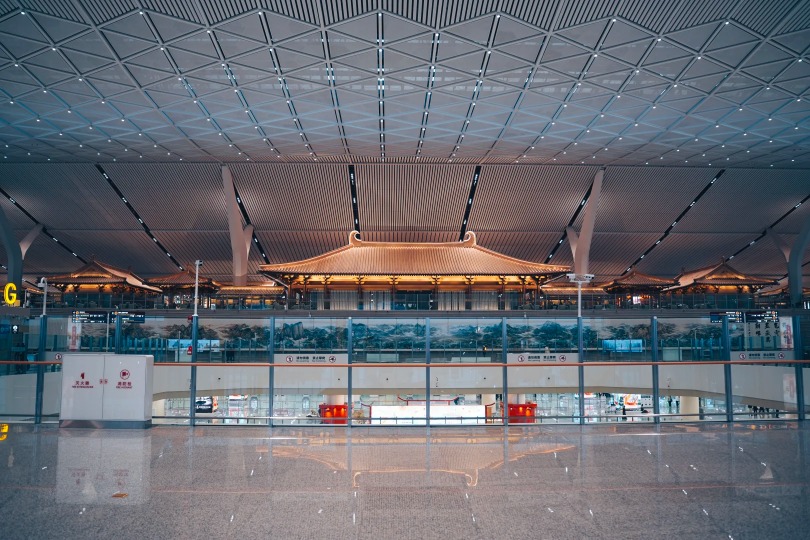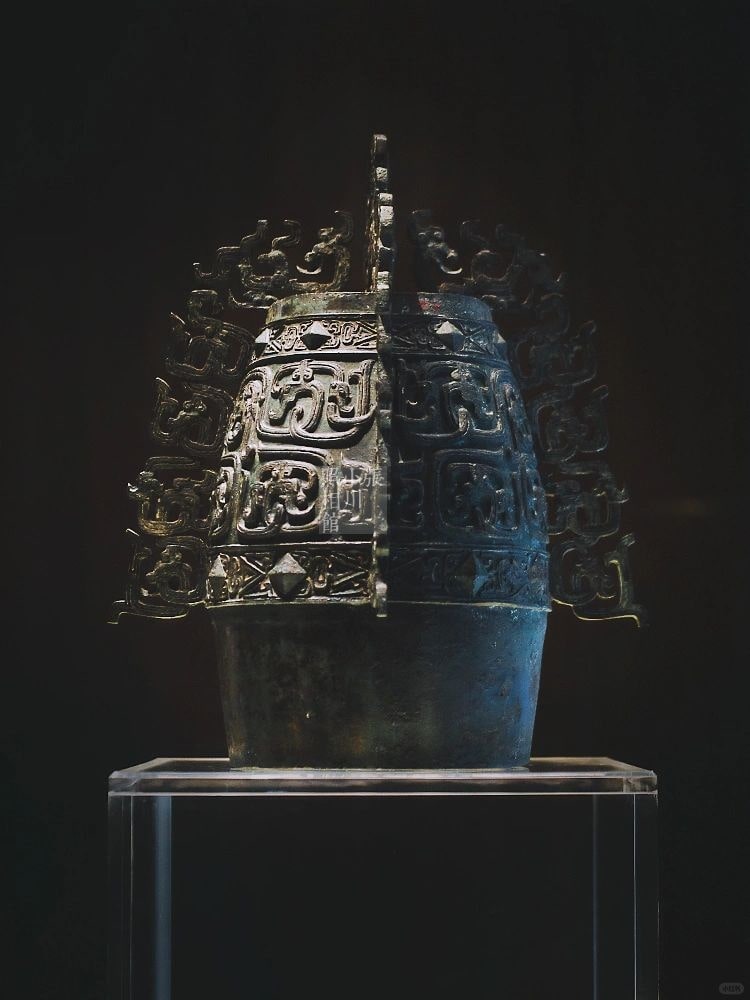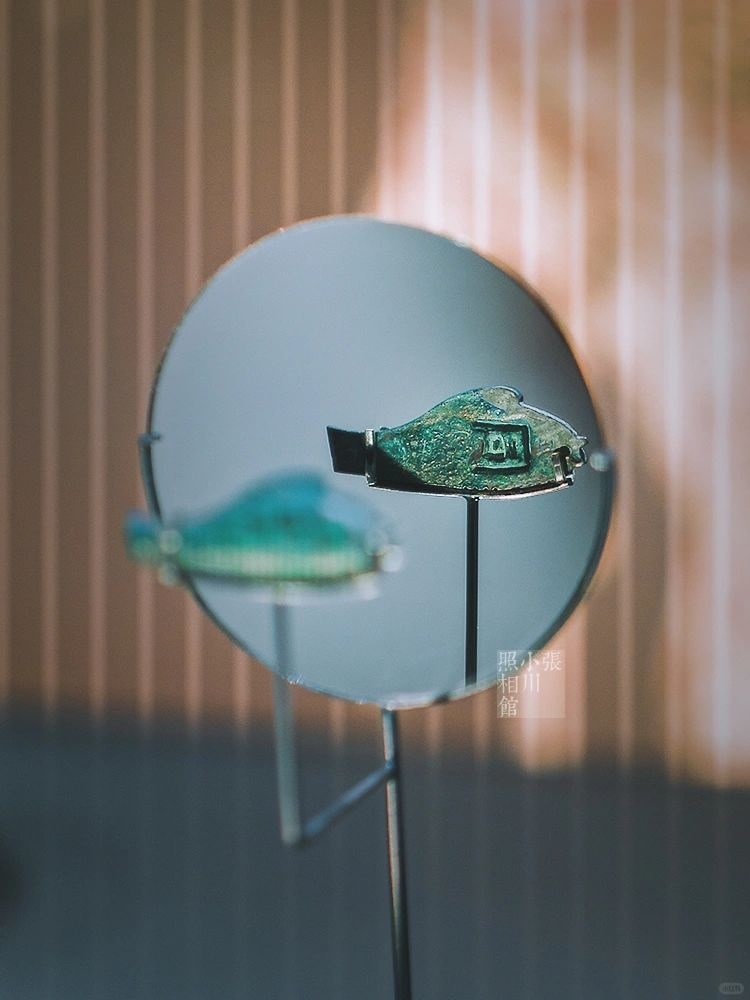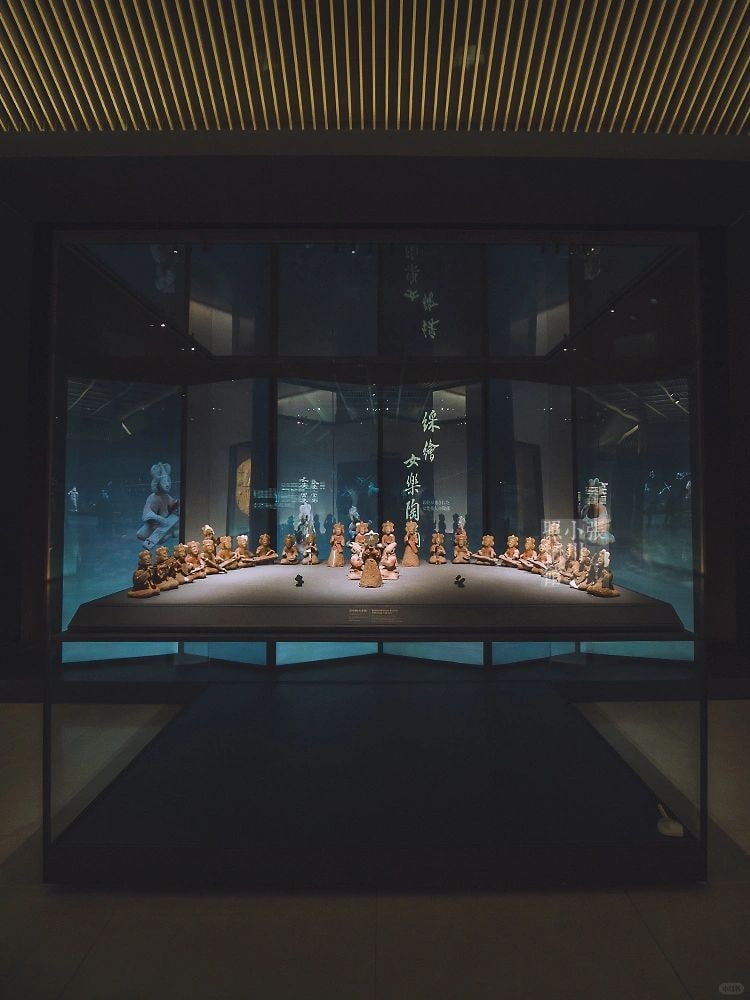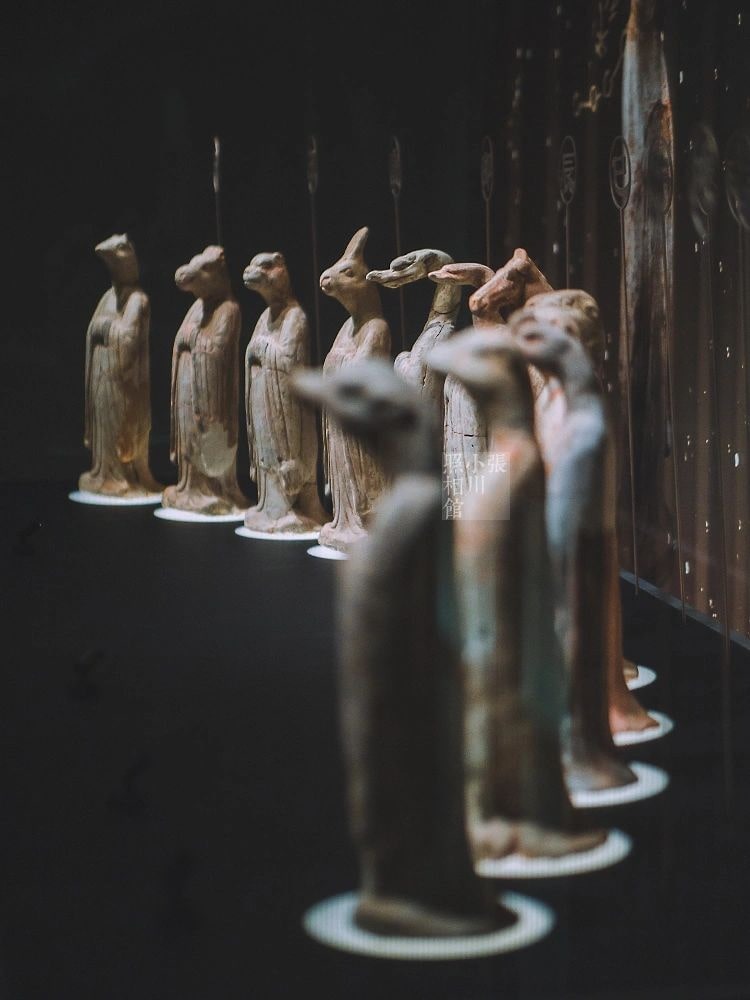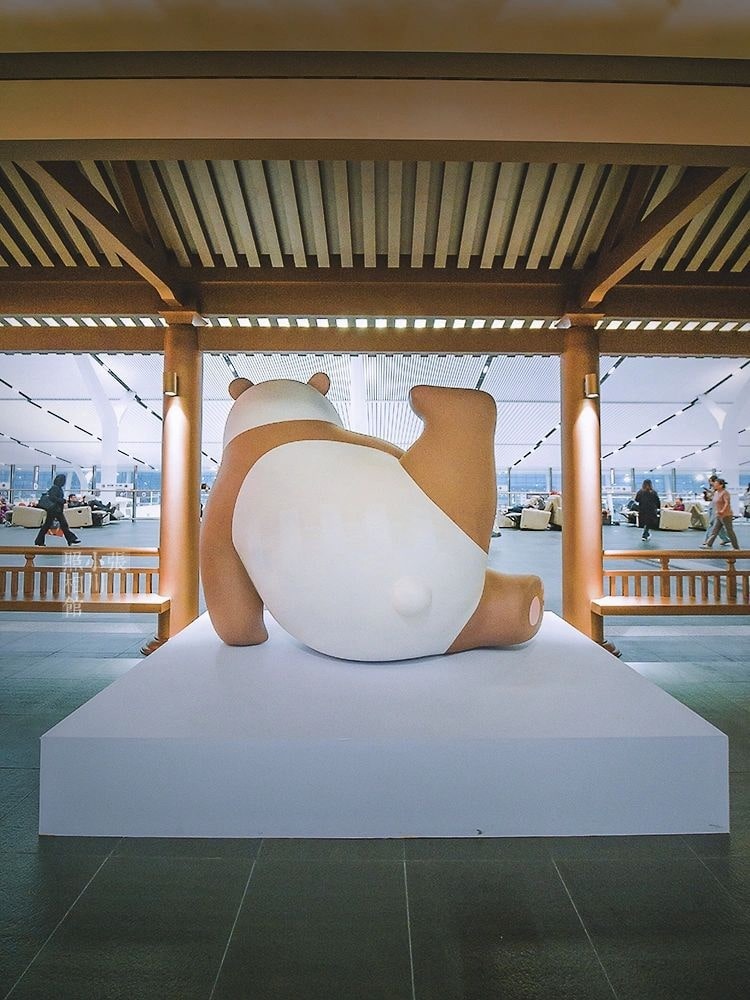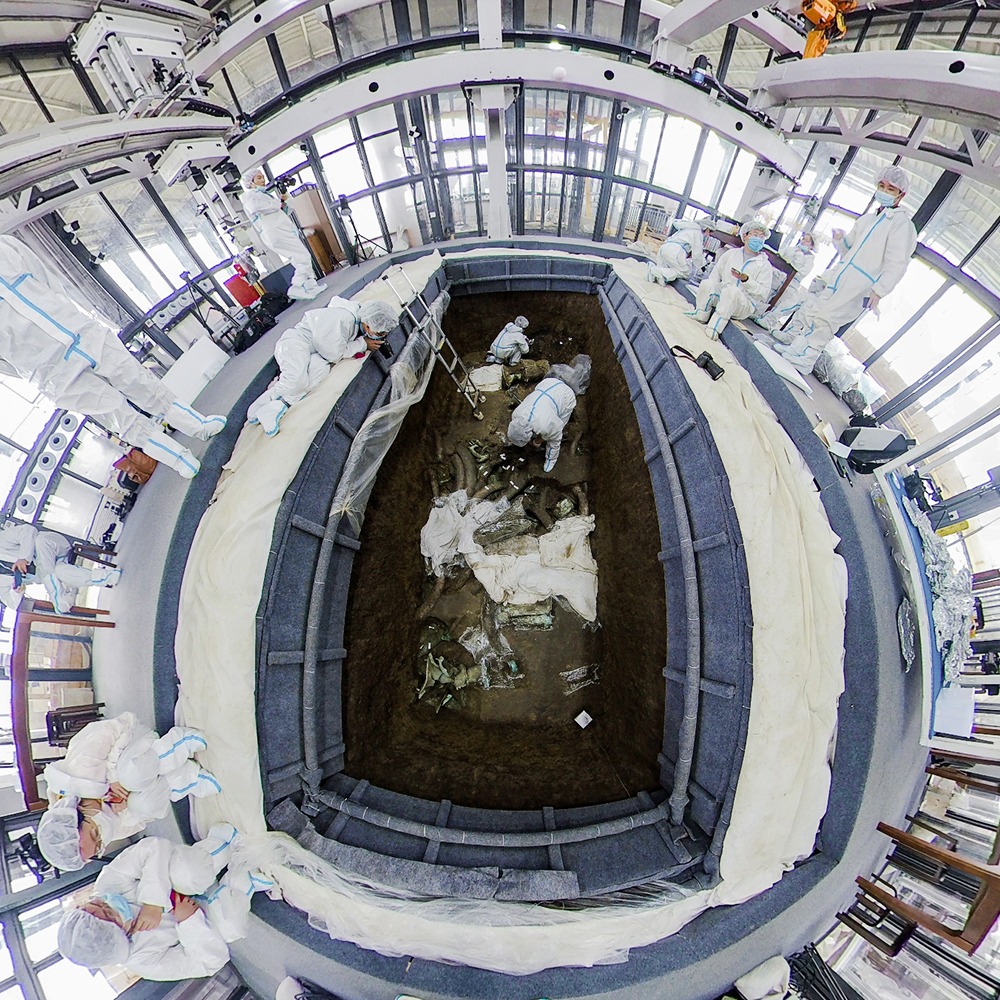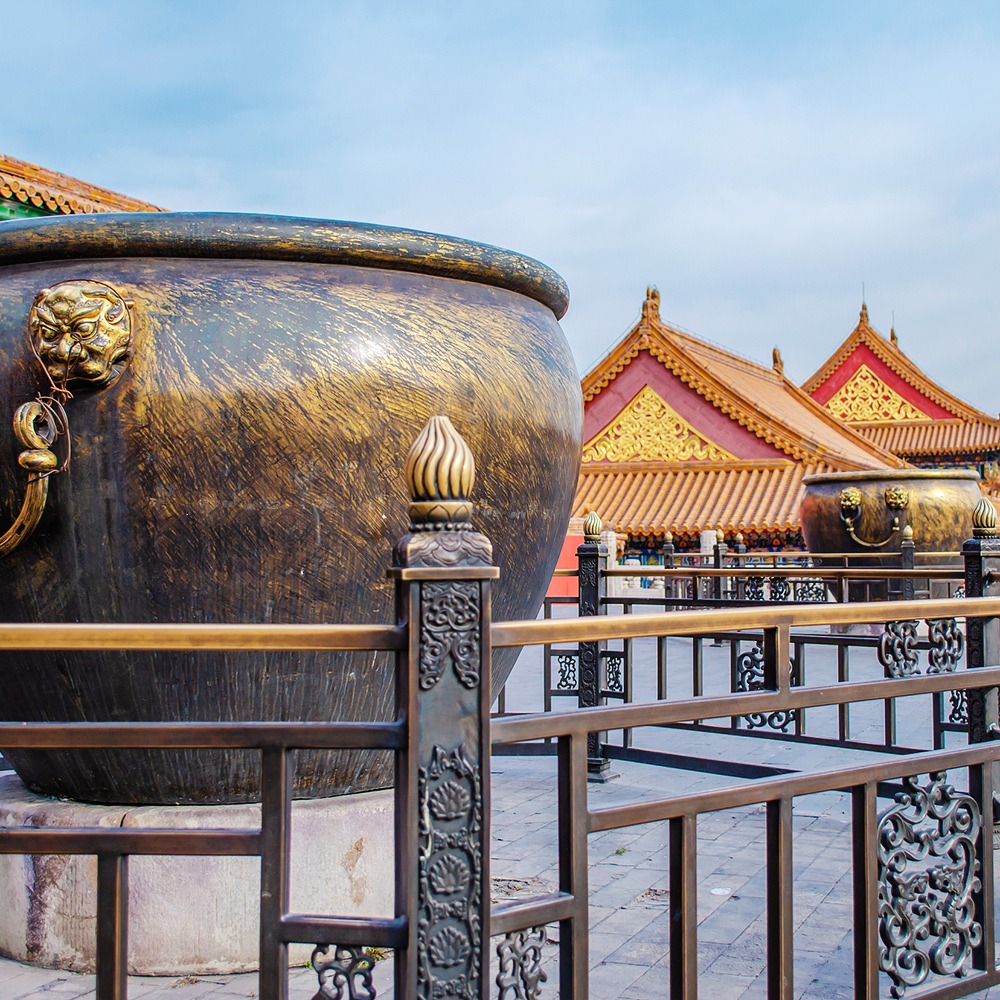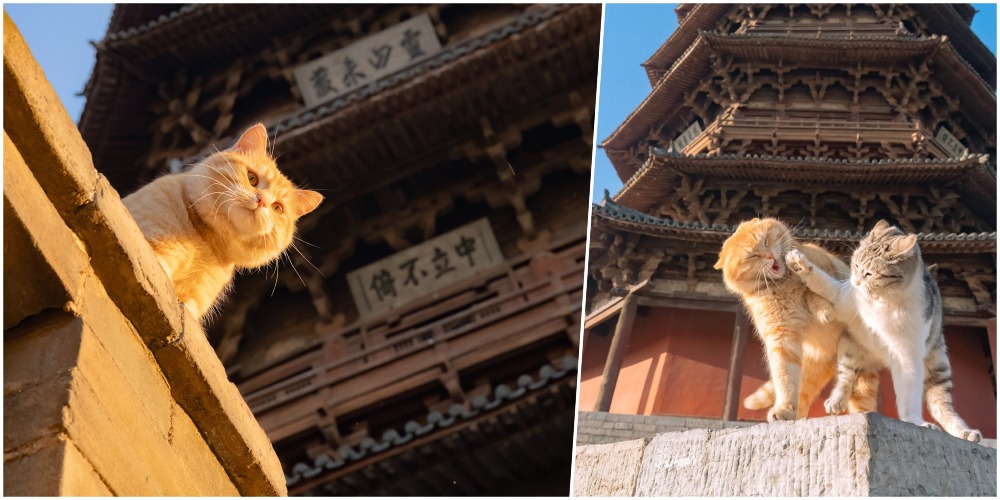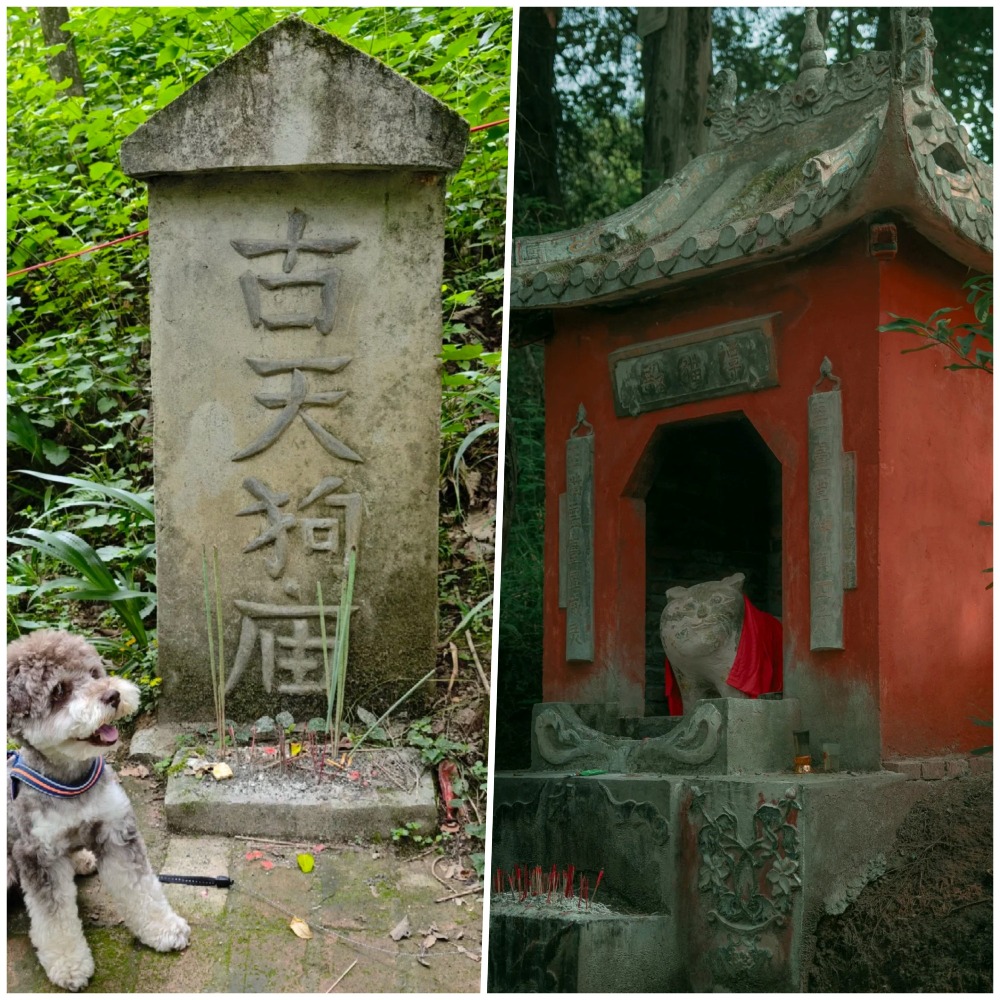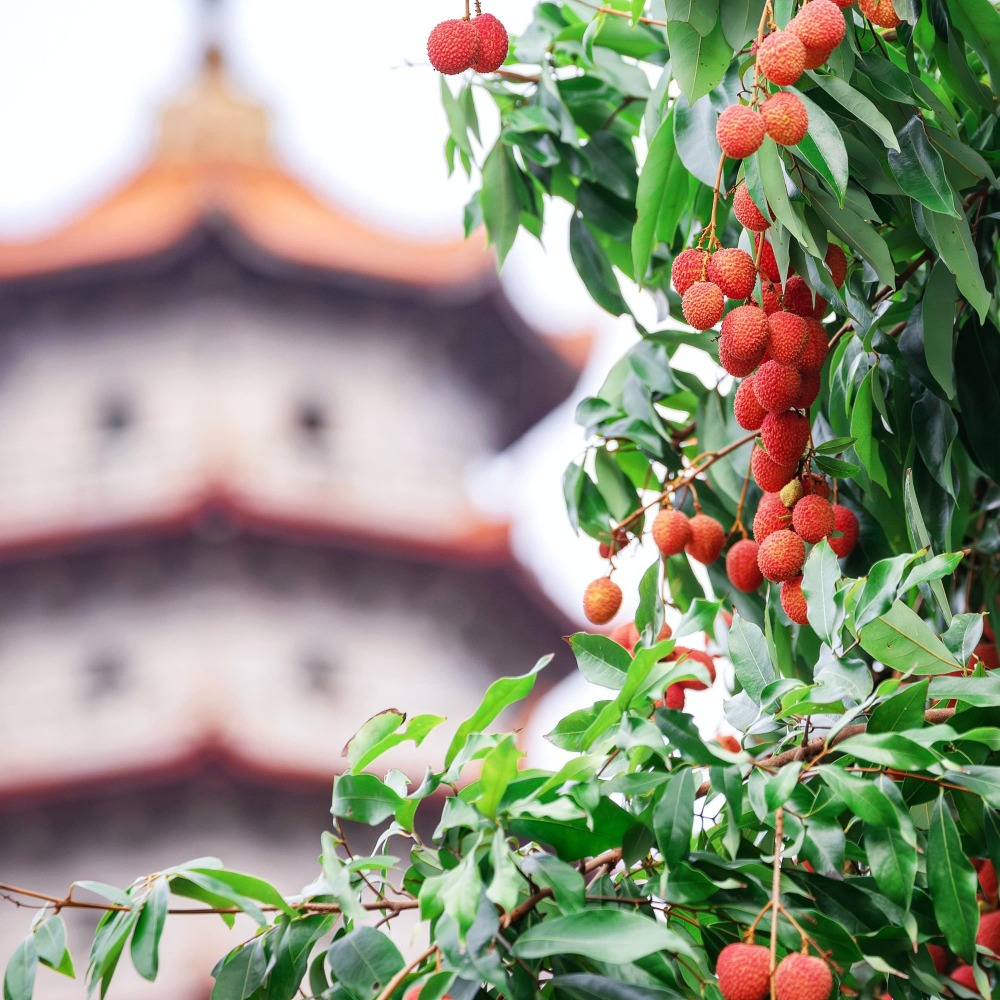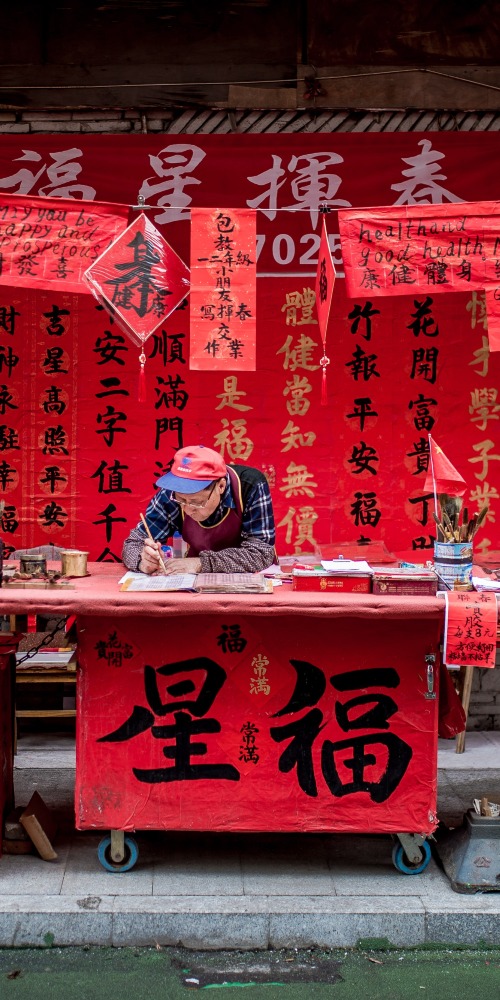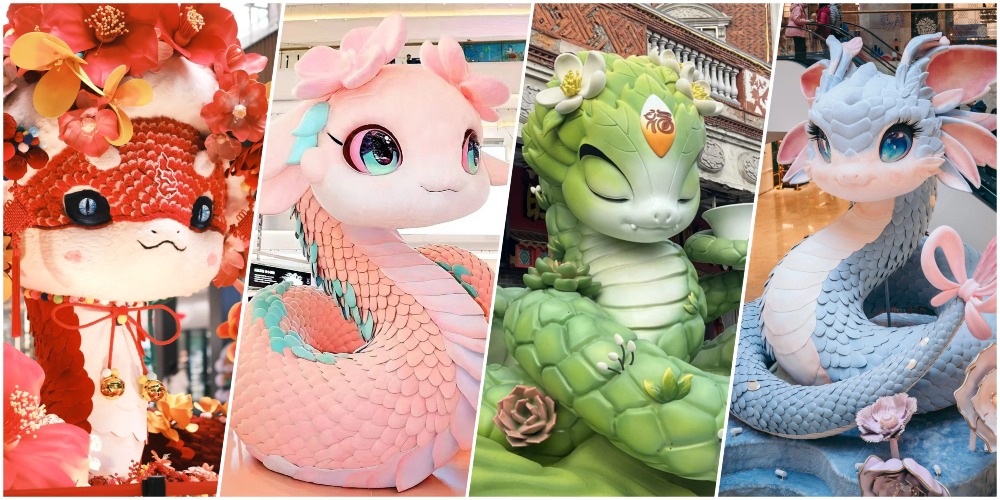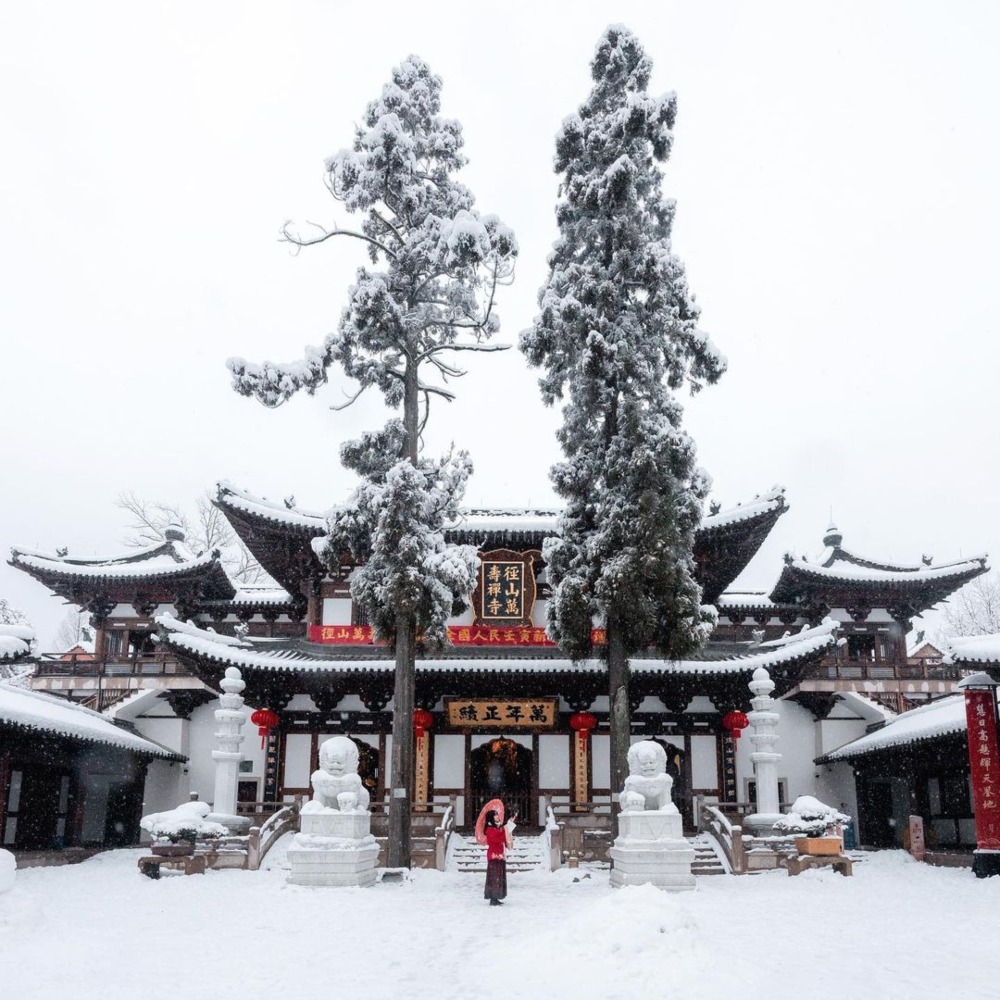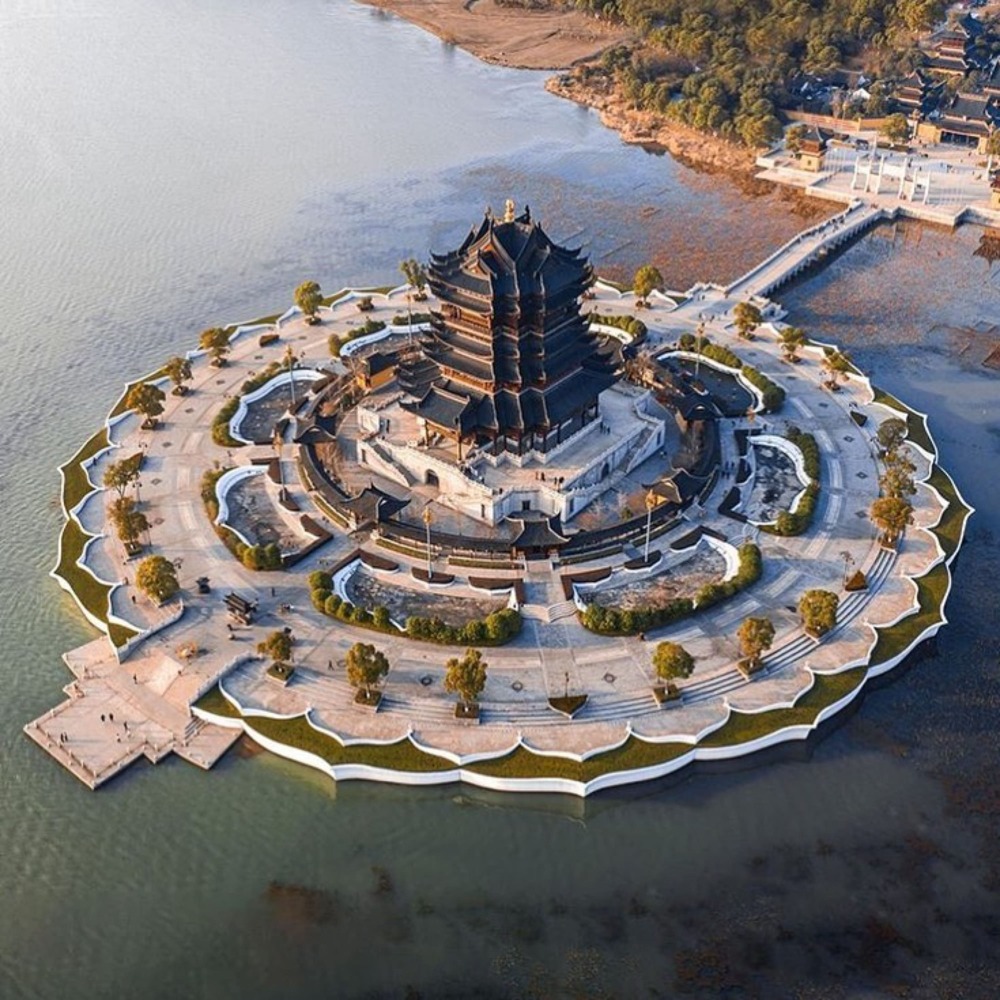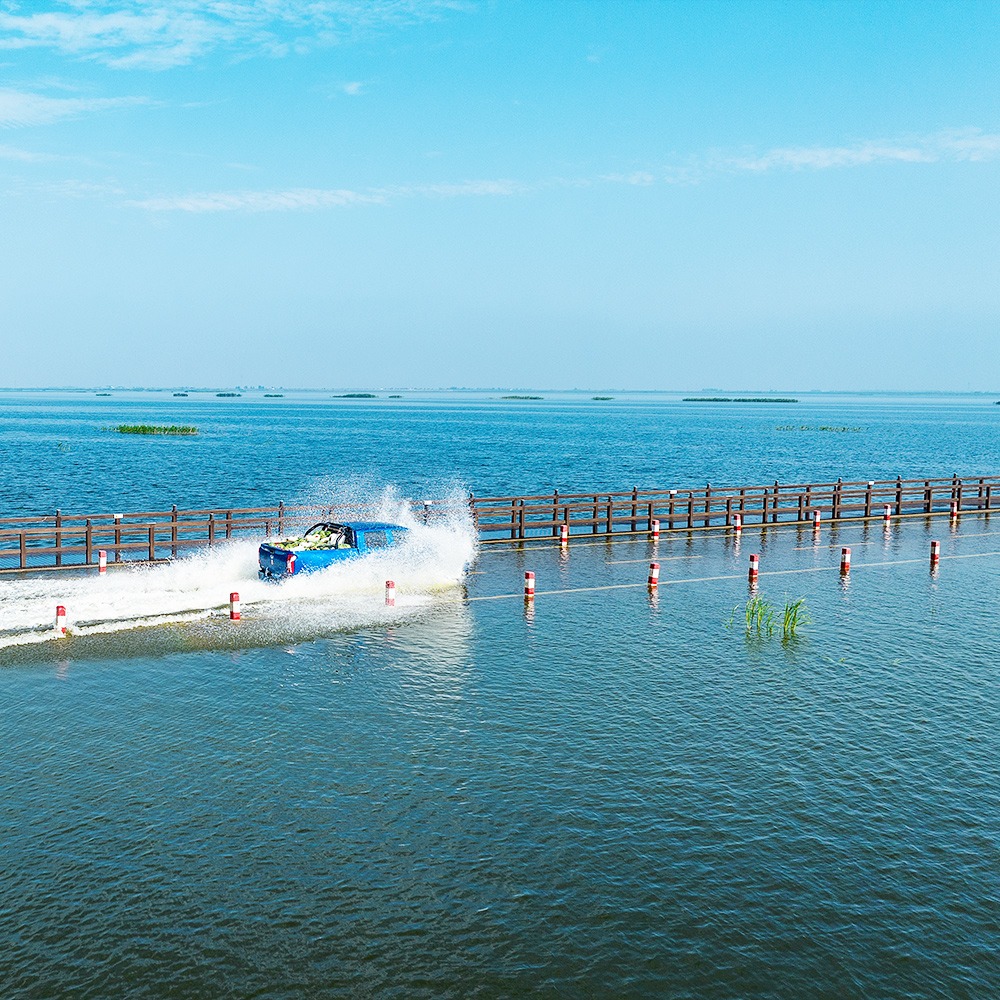Published : 2025-04-15
A museum built inside an airport? Yes, that is what you will find in China's Xi'an Xianyang International Airport.
With the opening of its Terminal 5, the world's first exhibition of cultural relics in an airport was officially unveiled.
What is the story of this new cultural landmark in Xi'an? Let's explore it together!
A museum built inside Xi'an Airport?
Nestled within the sleek and modern white streamlined architecture at Xi'an Xianyang International Airport's Terminal 5, a resplendent Tang Dynasty-style "palace" catches the eye.
This is the world's first airport museum—the China West Airport Group Museum of Heritage.

With a total area of 6,400 square metres, the China West Airport Group Museum of Heritage adopts a Tang Dynasty architectural style, replicating the three-layer eaves structure of the Hanyuan Hall of Daming Palace (大明宮含元殿) and the layout of the ancient Chang'an city (now Xi'an).
It features over 120 cultural relics, leading the audience through the ancient capital of China.
Xi'an Airport's expansion project turned into an archaeology site
Some might wonder why the museum was located at the airport?
It turns out that in ancient times, the site of Xi'an Airport was known as Hongduyuan (洪瀆原), a resting place for many emperors, including King Wen and King Wu of Zhou Dynasty (1046 BC—256 BC), as well as five emperors of the Western Han Dynasty (202 BC—25 AD), making it a treasure trove of profound cultural heritage.

In June 2020, the expansion project of Xi'an Airport began.
During the process, archaeologists discovered over 6,800 ancient cultural relics at the construction site, with more than 20,000 artifacts (sets) unearthed, covering precious relics from the Neolithic to the Ming and Qing dynasties.
This provided the opportunity to establish the China West Airport Group Museum of Heritage.
After four years of effort, the team finally set up the museum in Terminal 5, showcasing the artifacts unearthed during the airport construction to integrate cultural experiences into people's daily lives.
Read more: Excavating artifacts in the "space capsule"? Cutting-edge technologies in Sanxingdui archaeology
Explore ancient Chang'an under Xi'an Airport
The permanent exhibition of this airport museum is housed in the "Sifang Hall" (四方館), named after the diplomatic offices of the Sui and Tang Dynasties.
The exhibition is divided into three major sections: "A Decade at Hongdu," "The Silk Road Unveiled," and "The Flourishing Glory of Chang'an."
The exhibition narrates the history of Hongduyuan from the Pre-Qin to the Ming and Qing dynasties through artifacts.
It also showcases the multicultural integration along the Silk Road with figurines of Hu people and trade objects, while Tang Dynasty architectural elements and everyday items recreate the splendour of Chang'an, weaving together the millennia-long transformation of Xi'an.
There is also a Hall of Treasure, a dedicated space of 88 square metres, where a representative artifact of Shaanxi Province is selected for a special exhibition.
For its inaugural exhibition, the museum presents a national treasure: the Qin Gong Bo (秦公鎛), a magnificent bronze ritual vessel from the Spring and Autumn Period (770 BC-476 BC).
In the fast-paced environment of modern airports, there is a space that allows time to slow down, offering everyone a moment to experience historical culture.
This transforms the often deemed "meaningless idle time" of layovers and waiting into something valuable, enriching the travel experience.
Read more: Mystery of the "ageless" ginkgo tree in China's Xi'an
